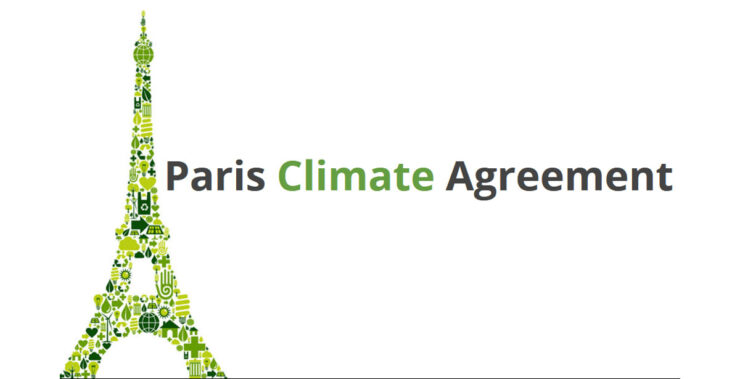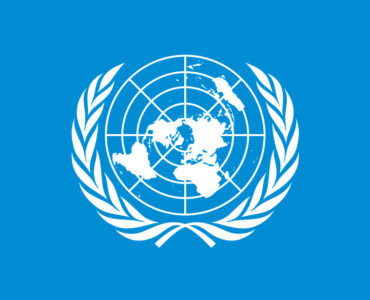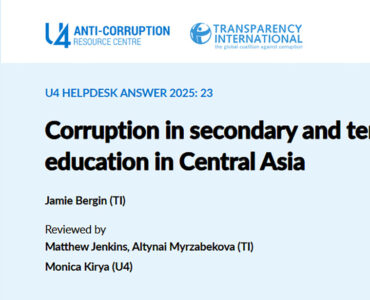Turkmenistan has recently published the updated Nationally Determined Contributions (NDC 2.0) on the NDC Registry of the United Nations Climate Change website. The NDC outlines the measures that Turkmenistan plans to address climate change and to lower its emissions in accordance with the Paris Agreement. The NDC establishes targets for reducing emissions while prioritizing economic growth. The Progres research team contacted the United Nations Framework Convention on Climate Change which confirmed via email that Turkmenistan had not uploaded its updated NDC to the NDC Registry as of December 2022. The new NDC was uploaded three days after the publication of the summary of National Strategy of Turkmenistan on Climate Change on Progres.online.
The updated NDC was approved by the government of Turkmenistan in May 2022 but it was made public only in January 2023. It is available in the Russian and English languages. Unlike the short seven-page first version of the NDC, published in 2016, the revised NDC spans sixty pages. The revised NDC aims to achieve a 20% decrease in greenhouse gas emissions per unit of GDP by 2030, relative to 2010 levels, but does not specify any objectives for increasing renewable energy capacities. Additionally, the information provided regarding GHG emissions is limited to data up to 2010.
Major takeaways:
- The updated NDC sets a very important target of reducing GHG intensity of the economy by 20% until 2030. However, neither this document nor the National Strategy mention how to tackle the emissions specifically.
- There are no targets to increase the share of renewable energy in the country.
- While the mentioning of tax mechanisms indicates the government’s readiness to alter incentive systems and tackle energy inefficiencies, the reform must be done faster in a transparent manner.
NDC 2.0 and the national strategy
The document is primarily based on the National Strategy, which we analyzed. The revised NDC reiterates the observations, measures and goals described in the National Strategy.
Major differences:
- According to the National Strategy1, the average increase in air temperature from 1950 to 2010 was 2℃, whereas the NDC 2.0 indicates2 an average increase of 1.4℃ in air temperature during the same period.
- The National Strategy provides estimates of greenhouse gas emissions from 2000 to 20173, while NDC 2.0 only presents data on greenhouse gas emissions up to 20104 and acknowledges that no information is available for the period between 2010 and 2020. There is an inconsistency between the two reports regarding the period for which GHG emission data is presented.
- The National Strategy mentions the development and promotion of electric vehicles as one of the priority measures to reduce the emissions of the transport sector5, while the NDC 2.0 does not mention electric vehicles.
Goals for reducing greenhouse gas emissions
NDC 2.0 does have one very important measurable target set for Turkmenistan: “to reduce its GHG emissions in 2030 by 20% compared to the level of emissions in 2010”6. However, it is important to note that this target is not referring to a reduction in the annual total greenhouse gas emissions, as the wording might suggest. Instead, the goal is to decrease the GHG intensity of the economy, which means the government aims to increase GDP at a faster rate than greenhouse gas emissions. As a result, there will be a lower CO2eq/manat by 2030. This can be observed by a careful reader, as NDC 2.0 estimates that emissions will actually double by 20307.
A 20% reduction in GHG intensity is not enough to combat climate change, as the global temperature increase can reach 1.5℃ by 2030 already, as mentioned in the National Strategy. Fugitive emissions, which refer to the unintended or accidental release of greenhouse gasses during the extraction, production, processing, and transportation of fossil fuels, are a significant contributor to GHG emissions9. If Turkmenistan promptly addresses fugitive emissions in the oil and gas industry, which the government has expressed support for but has not pledged to the Global Methane Commitment in November 2021, a significant proportion of emissions could be reduced with relative ease.
Contradictions within the NDC
In other parts, the NDC 2.0 of Turkmenistan contradicts itself. One of the measures to reduce GHG emissions is the “Establishment of a system for the rational use of energy resources and products through strategic pricing”10 and the “Introduction of financial and tax mechanisms to stimulate the reduction of GHG emissions”11. At the same time, the document mentions that the minimum tariff for water, gas and electricity will remain12. The minimum tariffs are achieved via subsidization from the government and it does not incentivize the rational use of energy resources.
Similarly, the document includes at least one numerical error. In one of the measures to reduce greenhouse gas emissions, the document mentions a project where 258 street lamps were replaced with LED lamps13. The authors of the document estimate that electrical energy savings were equal to 1.3 TWh of electricity per year, which would mean that each lamp consumed ~1 MW of power. To put that into perspective, in this example each lamp would be equivalent to 10 football stadiums lighting systems.
Such contradictions in measures and numerical errors put into question the credibility of data and the NDC.
A Comparison with other countries’ NDCs
To put Turkmenistan’s updated NDC 2.0 into perspective, Uzbekistan’s updated NDC sets a goal of reducing specific GHG emissions per unit of GDP by 35% by 2030 from the level of 2010. Unlike Turkmenistan, Uzbekistan’s NDC also sets targets for renewable energy capacities and plans to increase the share of renewable energy-based power generation to 25% by 2030. Also, Uzbekistan GHG inventory reports GHG emissions up until 2017 compared to Turkmenistan’s NDC, where data is available until 2010.
In contrast, the joint NDC of the European Union countries sets a target of reducing GHG emissions by 55% by 2030 compared to 1990, by increasing the share of renewables to 32% and increasing energy efficiency by 32.5%. The European Union’s target of reducing GHG emissions by 55% refers to a reduction in absolute GHG emissions, rather than a reduction in GHG intensity. In other words, the goal is to lower the total amount of greenhouse gas emissions produced, rather than reducing emissions produced per unit of economic output.
Donate to support Turkmen analysts, researchers and writers to produce factual, constructive and progressive content in their efforts to educate the public of Turkmenistan.
SUPPORT OUR WORKEndnotes
1 The National Strategy of Turkmenistan on Climate Change, page 18
2 Nationally Determined Contributions of Turkmenistan, page 11
3 The National Strategy of Turkmenistan on Climate Change, page 38
4 Nationally Determined Contributions of Turkmenistan, page 24
5 The National Strategy of Turkmenistan on Climate Change, page 45
6 Nationally Determined Contributions of Turkmenistan, page 32
7 Nationally Determined Contributions of Turkmenistan, page 30
8 The National Strategy of Turkmenistan on Climate Change, page 8
9 Nationally Determined Contributions of Turkmenistan, page 26
10 Nationally Determined Contributions of Turkmenistan, page 36
11 Nationally Determined Contributions of Turkmenistan, page 33
12 Nationally Determined Contributions of Turkmenistan, page 8
13 Nationally Determined Contributions of Turkmenistan, page 39






